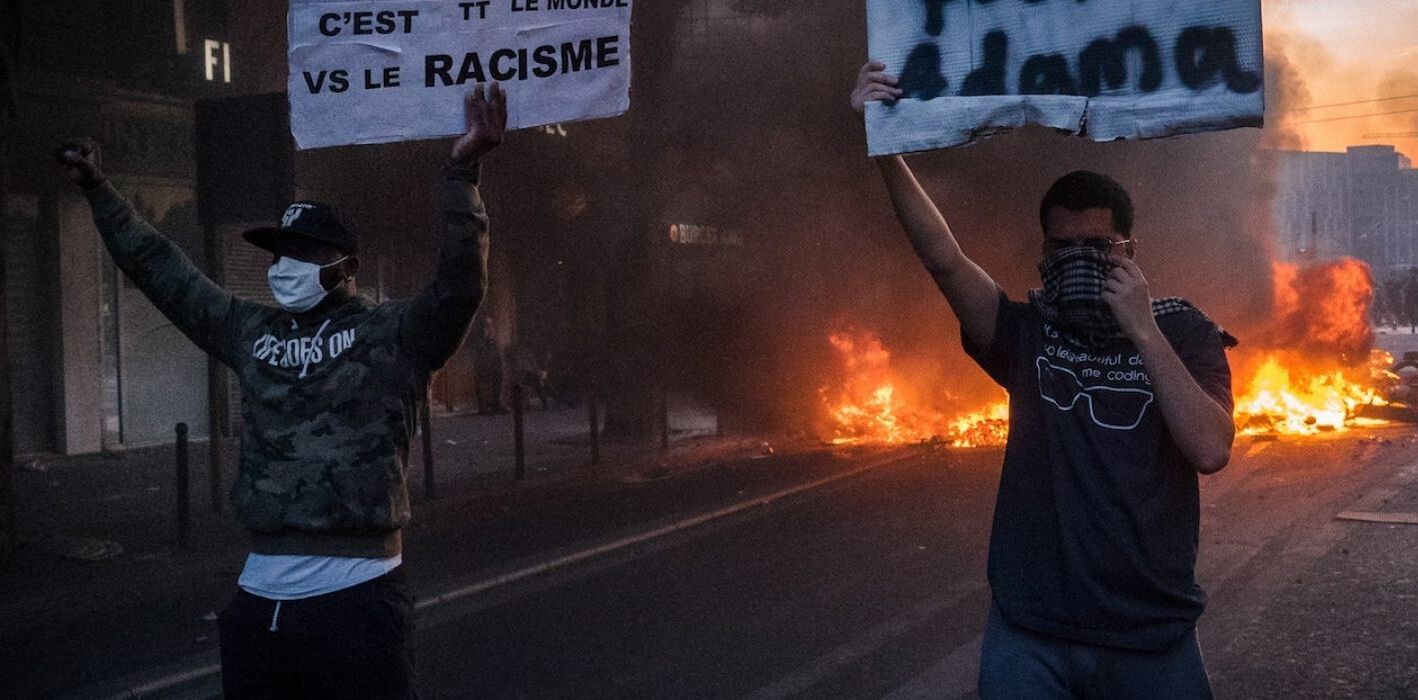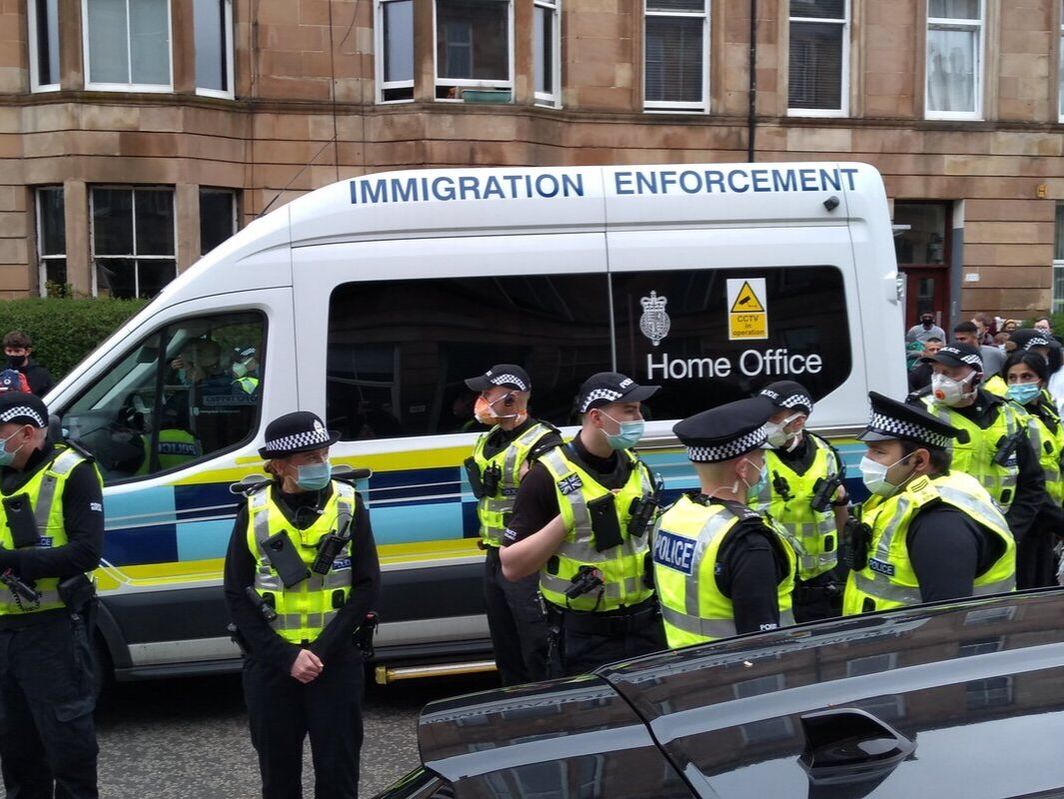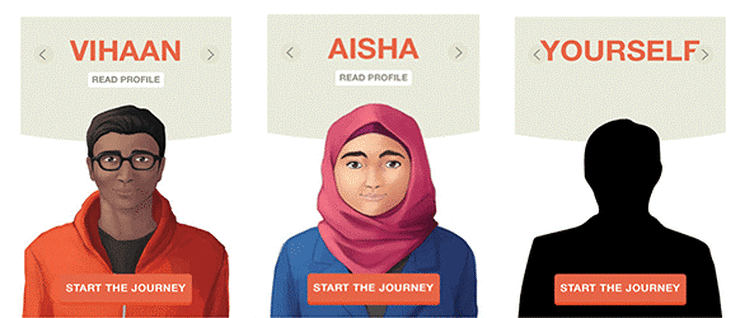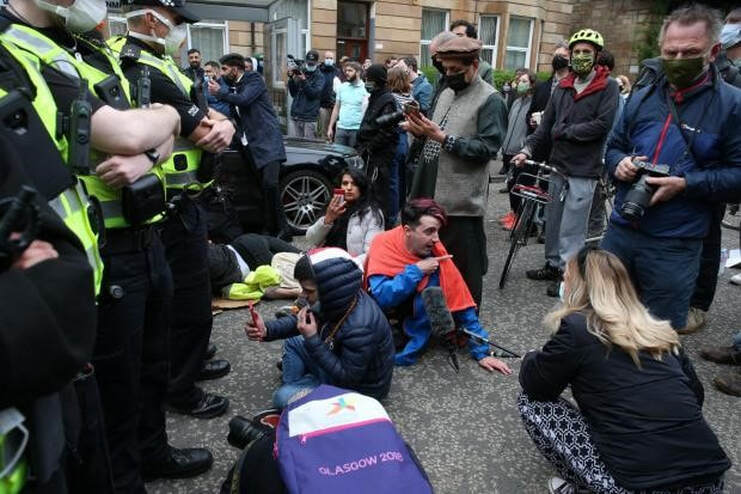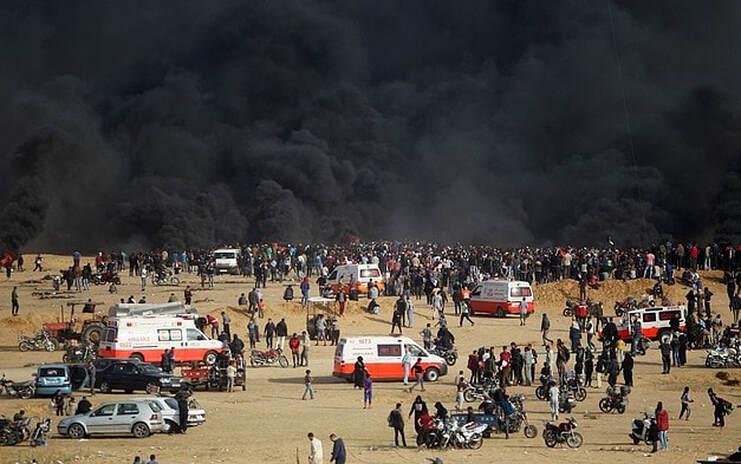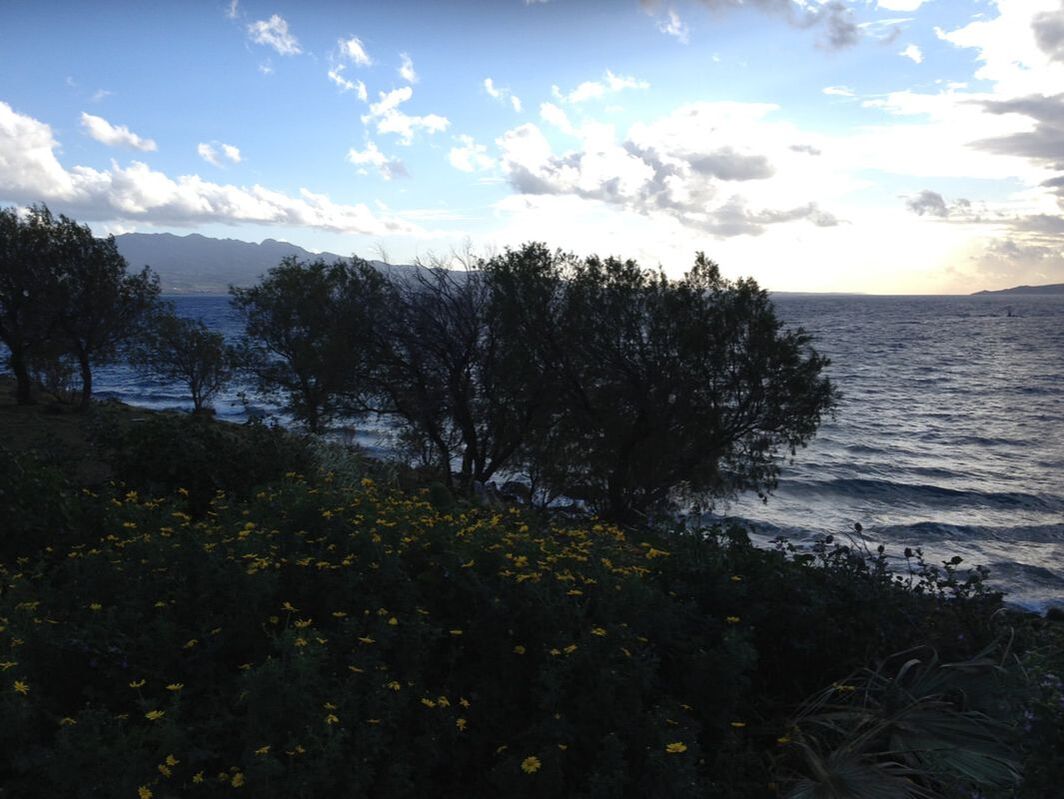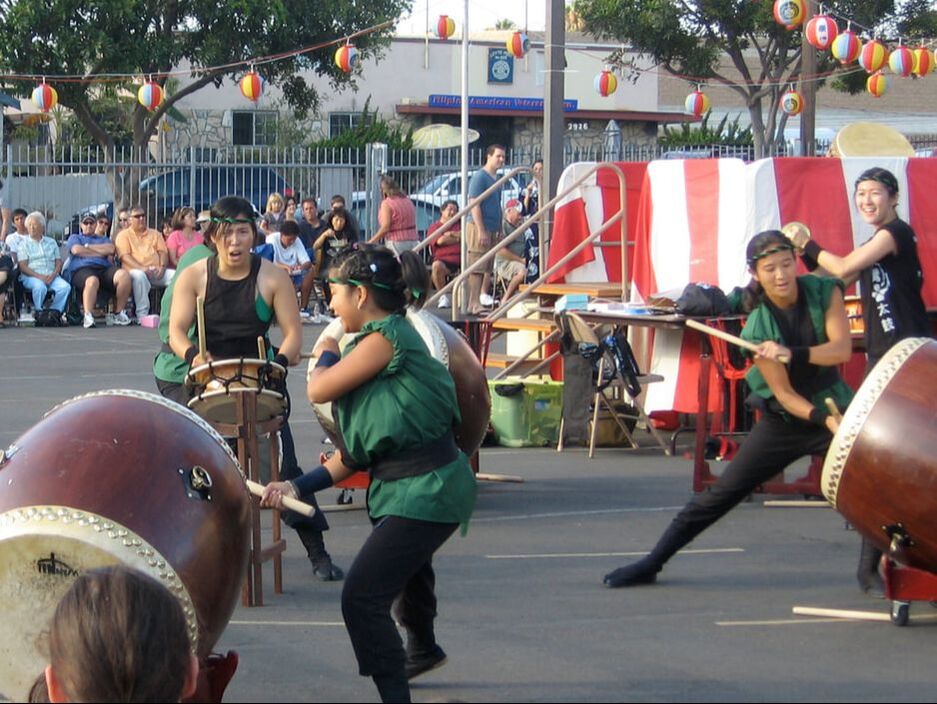|
|
|
Cross-posted from Spectre.
'For us who are determined to break the back of colonialism, our historic mission is to authorize every revolt, every desperate act, and every attack aborted or drowned in blood.' – Frantz Fanon, The Wretched of the Earth [1] On July 19, 2016, Adama Traore, a 24-year-old Black construction worker, was killed after an arrest by three police officers in Beaumont-sur-Oise, a northern banlieue, or suburban outskirt, of Paris. Adama was stopped for an identity check — a not uncommon measure by which police officers stop individuals and ask for their identification (often disproportionately targeting Black and Arab individuals). In this case, Adama was taken to a nearby police station and by the time he arrived, he was dead. The police originally stated that he had died of a heart attack, and then said he had prior health conditions which caused his death. In late May, the three police officers were cleared in their involvement for Adama’s death.
0 Comments
I’d just handed the baby over to my partner after the breakfast shift last Thursday morning when a friend messaged me. Activists had tweeted that an immigration enforcement raid on Kenmure Street in Pollokshields was being blocked by local people. My friend lives on the other side of town, but I live round the corner. ‘On way’, I replied. I pulled some trainers onto my bare feet, told my partner what was happening, and left the house.
The van was parked in front of another friend’s flat. 'IMMIGRATION ENFORCEMENT', with the targets of the raid inside. Ringed by police officers facing out, surrounded by protestors facing in. (I didn’t know until later that someone was lying under the van to stop it moving.) My friend was there at the front, face mask on, talking sharply to the police. His partner, nine months pregnant and with the home birth team on call, came out later with their two-year-old. Not that the home birth team would have been able to get through: police vehicles already blocked the street in both directions, up and down the block. I took a picture of the immigration enforcement van and the ring of police, and tweeted it. People on Twitter immediately noticed the black-and-white union jack with a ‘thin blue line’ down the middle that one of the officers was wearing.
In an age defined by hyper-visibility made possible by always-on digital media, brought to our fingertips by the smartphone, we are regularly fed images of (often extreme) racial violence. The circulation of the long eight minutes and forty-six seconds of George Floyd’s murder by Minneapolis police officer, Derek Chauvin, in May last year reinvigorated a movement across the Global North, against the disposability of Black lives. However, there is no simple way to untangle the dilemma that there is a seeming need to witness the death of a Black person to trigger a response. As LeRon Barton wrote, ‘watching Black men being beaten on video is the new lynching postcard.’
Despite the energy unleashed by the Black Lives Matter protests of 2020, it is not surprising that many antiracists remain sceptical about the lasting commitment of those momentarily inspired by the uprising. Will 2020’s #BLM moment be superseded by a return to scrolling through images of racial violence to which we seem increasingly immune? These questions animate my Identities article, ‘Looking as white: anti-racism apps, appearance and racialized embodiment’, which looks at mobile apps for reporting on and educating about racism. As mobile technology is such a part of our everyday experience, it can clearly be a powerful tool for pedagogy. This is the aim of one of these apps, the Australian-based Everyday Racism app. The app encourages ‘bystanders’ to learn about the experiences of people of colour and Aboriginal people who face racism in their daily lives. It uses gamification to deliver text and video messages to app users about these experiences in the aim of building empathy and encouraging what Australian racism researchers call ‘bystander antiracism’ (a strange appropriation of a concept used to describe those who stood by and did nothing during the Nazi deportation of the Jews).
Around 9.30am on Thursday 13 May I checked my phone for messages, as I was about to start making preparations for Eid dinner later that evening. One of the No Evictions Network activists had posted a photo of an immigration enforcement van in Kenmure Street in Pollokshields and said that he was going to investigate what was happening, and asked others in the network to come down to support him. As more and more members of the network arrived, it transpired that immigration officers had raided the home of two men, Sumit Sehdev and Lakhvir Singh, and put them in the van. The immigration van couldn’t leave because it was surrounded by activists, and one of them had got under the van (and would stay there for eight hours to ensure it wouldn’t go anywhere). Activists reported that Police Scotland were helping immigration officials by trying to persuade the activists to disperse. In solidarity, thousands of Pollokshields locals as well as people from across the city gathered to prevent this immigration raid. The two men, both migrants from India, were eventually released.
Throughout the day I was reading news reports and comments on social media about how friendly and welcoming the people of Glasgow are to newcomers, as if that was enough explanation for the overwhelming solidarity against this particular immigration raid. Whilst Glasgow has a reputation for being friendly, it also has a history of racism going back to the days of empire and the attacks on black seamen in 1919. I also read reports crediting the release of the two men to the actions of individual activists. This is mistaken.
The territorial realization of the Israeli state produced a new category of stateless people: Palestinian refugees. Those expelled from their homes, villages and land during the onset of the Nakba (catastrophe): a large scale ethnic cleansing process executed in 1947-48 Palestine, has resulted in the creation of one of the largest and longest standing protracted refugee communities world-wide today. The unresolved question of Palestinian displacement raises important considerations in, what scholars of redress have named, an era of settler colonial reparations. One line of inquiry that remains relevant for thinking about the future of redress to Palestinian displacement is the following: How did an Indigenous Palestinian society with historical ties to land come to be internationally governed as refugees external to the land? Further, how might we think about the history of redress and humanitarianism in the early years of Palestinian displacement as one tied to a broader genealogy of race and settler colonial formations in Palestine?
In 2015, a toddler gained world fame most tragically. Alan Kurdi, a three-year-old boy, drowned alongside his brother Ghalib and their mother Rehanna Kurdi while trying to cross the Aegean Sea from Turkey to Greece. The photographs of his washed-ashore body lying face down on the beach on the Bodrum peninsula in Turkey travelled around the world and caused a global outcry.
These images were widely modified and re-mediated in forms of cartoons, drawings, graffiti, sand sculptures and re-enactments to raise awareness of the EU’s lethal borders. Moreover, they became a token for solidarity with people seeking refuge in Europe. Alan Kurdi represented the death of so many others and thus became a symbol for the protracted disaster in the Mediterranean Sea. The dead child’s images represented more than anything else the fear, anger and hope revolving around the so-called ‘EU refugee crisis’ in 2015. For a brief moment, the global indignation caused by the photographs made many critics of the EU border management believe that EU policies towards migrants and refugees might change. While the outrage about the EU’s role in producing this deadly sea has triggered scattered protests in the past, nothing spurred such a vehement reaction as the images of the dead child. Not only members of civil society but also policy makers expressed sorrow over his tragic death. The cruelty of the border regime became tangible and even contributed to the opening of the Balkan Route.
It is well known that Asian American men are commonly stereotyped as effeminate, asexual and nerdy in American society. But how are such dominant stereotypes experienced by them, and how do they negotiate, avoid and contest them? In my Identities article, ‘What makes hegemonic masculinity so hegemonic? Japanese American men and masculine aspirations’, I demonstrate how Asian American men appear to be emasculated in such a manner because they are compared to idealised, hegemonic images of masculinity usually associated with white men.
Because such hegemonic masculine standards have become pervasive and widely accepted in American society, they have also been adopted by Japanese American men. As a result, they perceive their subordinate masculinity as inferior and effeminate, making them feel romantically unattractive. Such negative assessments are shared by Japanese American women, who are also under the pervasive influence of hegemonic masculinity and often find Japanese American men to be romantically undesirable, and prefer to date and marry white men. |
|
Explore Identities at tandfonline.com/GIDE |
|
The views and opinions expressed on The Identities Blog are solely those of the original blog post authors, and not of the journal, Taylor & Francis Group or the University of Glasgow.
